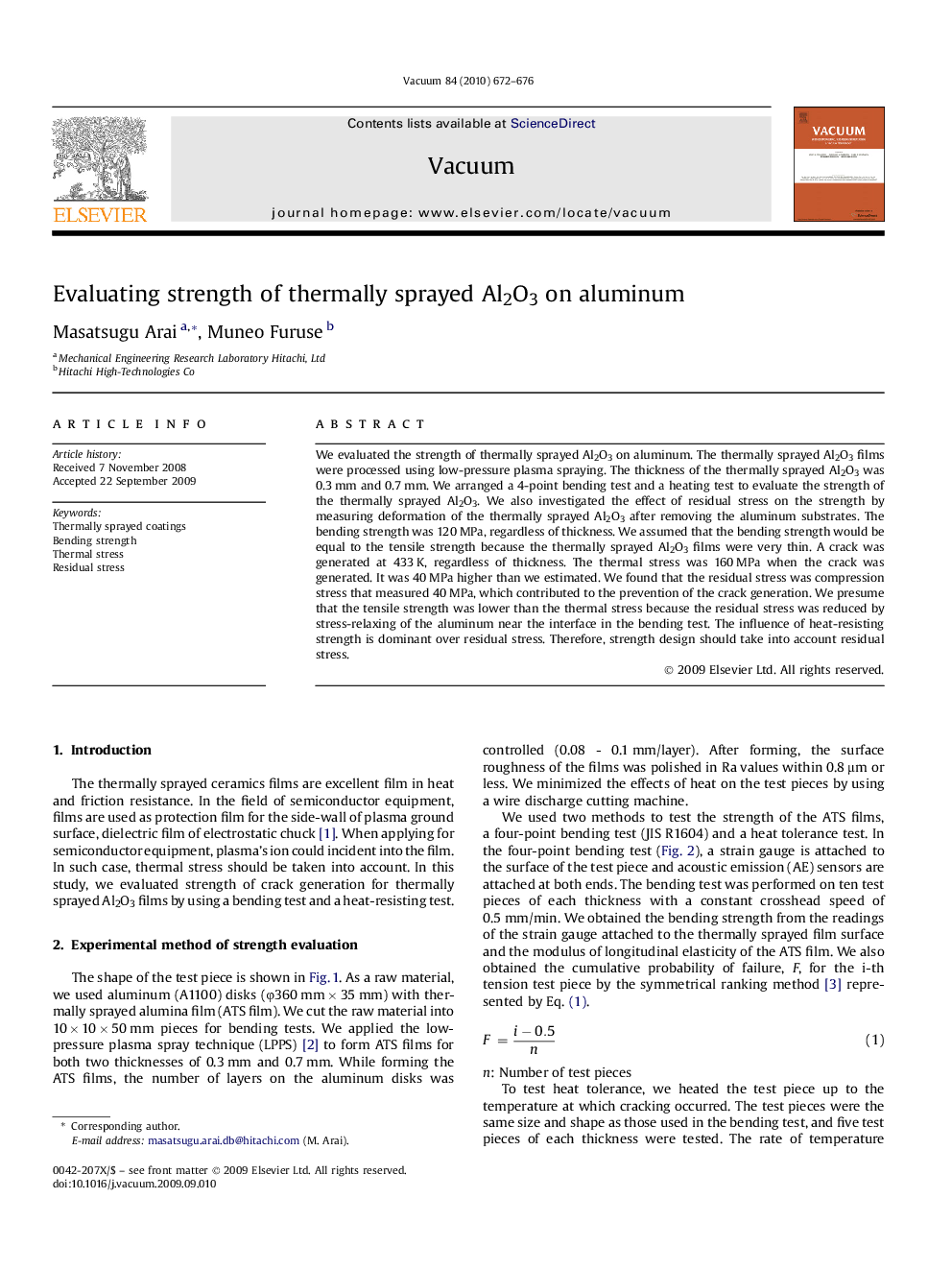| Article ID | Journal | Published Year | Pages | File Type |
|---|---|---|---|---|
| 1691055 | Vacuum | 2009 | 5 Pages |
We evaluated the strength of thermally sprayed Al2O3 on aluminum. The thermally sprayed Al2O3 films were processed using low-pressure plasma spraying. The thickness of the thermally sprayed Al2O3 was 0.3 mm and 0.7 mm. We arranged a 4-point bending test and a heating test to evaluate the strength of the thermally sprayed Al2O3. We also investigated the effect of residual stress on the strength by measuring deformation of the thermally sprayed Al2O3 after removing the aluminum substrates. The bending strength was 120 MPa, regardless of thickness. We assumed that the bending strength would be equal to the tensile strength because the thermally sprayed Al2O3 films were very thin. A crack was generated at 433 K, regardless of thickness. The thermal stress was 160 MPa when the crack was generated. It was 40 MPa higher than we estimated. We found that the residual stress was compression stress that measured 40 MPa, which contributed to the prevention of the crack generation. We presume that the tensile strength was lower than the thermal stress because the residual stress was reduced by stress-relaxing of the aluminum near the interface in the bending test. The influence of heat-resisting strength is dominant over residual stress. Therefore, strength design should take into account residual stress.
